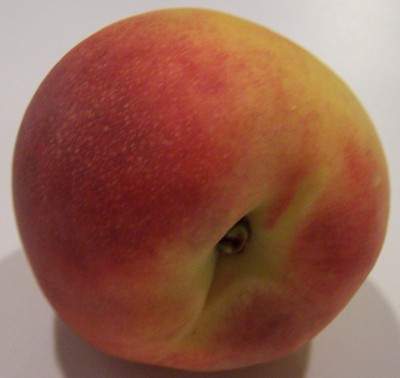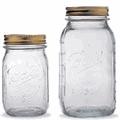
Looking for Peach Varieties Guide - Characteristics, harvest dates, and uses for eating, home canning, freezing and preserving- which peaches to pick and why! in 2025? Scroll down this page and follow the links. And if you bring home some fruit or vegetables and want to can, freeze, make jam, salsa or pickles, see this page for simple, reliable, illustrated canning, freezing or preserving directions. There are plenty of other related resources, click on the resources dropdown above. If you are having a hard time finding canning lids, I've used these, and they're a great price & ship in 2 days.
If you have questions or feedback, please let me know! There are affiliate links on this page. Read our disclosure policy to learn more.
Peach Varieties Guide - Characteristics, harvest dates, and uses for eating, home canning, freezing and preserving- which peaches to pick and why!
Varieties of Peaches for Eating Fresh, Home Canning, Freezing and Preserving
Characteristics, descriptions, which to pick, when and why!
Out of the hundreds of varieties of peaches, each can be classified as clingstone, freestone, or semi-freestone / semi-clingstone. That refers to how firmly the flesh attaches to the pit. Freestone types are obviously the easiest to work with! As to flavor; the most important factor is fresh-picked. Almost any variety, when allowed to ripen on the tree, will taste better than anything from the grocery store. Peaches do not ripen (become more sweet) once picked, they simply soften (due to enzymes and bacterial action).
Stones or pits
Freestone: As its name implies, the stone is easily removed from this variety, making it a good choice for eating fresh. Harvest begins in late May and continues to October. This is the type most commonly found in your local grocery store. They tend to be larger than clingstones, with a firmer, less juicy texture, yet still sweet. They are excellent for home canning, freezing and baking purposes.
Semi-freestone: This newer type is a hybrid of the clingstone and freestone. It is good for general purposes, both fresh and canned. Also called semi-clingstone.
Clingstone: These are so named because the flesh clings stubbornly to the stone or pit. In the Northern hemisphere, this type is the first to be harvested, ripening May through August. The flesh is yellow, with bright red touches closest to the stone. They have a soft texture, and are juicier and sweeter -- perfect for desserts. This is the preferred variety for jellies, jams, and canning. Although clingstones are tasty eaten fresh, they are seldom found in the local market. The commercial industry uses clingstones for peaches canned in various levels of syrup.
Color of the peach flesh
Yellow - Most peaches have a yellow flesh which can range from a light yellow to an orange yellow or even streaked with red. Other yellow-fleshed peach varieties are primarily yellow but become red closer to the pit. Examples of yellow-fleshed peaches include cultivars such as "Elberta", "Autumn Gold," "Earligrande," "O'Henry," "Suncrest" and "Tropi-berta."
White - White-fleshed peaches are
usually a variant of Asian peach trees. The flavor is almost identical,
although many people say they taste sweeter. The skins are typically
similar to yellow-flesh peaches, with yellow or red skins. Common white
peach tree cultivars are "Babcock," "Nectar," "Belle of Georgia," and "Arctic Supreme."
Other Peach types
Donut Peaches - A relatively new group of peaches have flatter or saucer-shaped peaches that are shaped more like a doughnut. Donut peaches usually have a small clingstone pit. They taste good, but their flavor is no better than most other peaches; just marketing hype.
Nectarines are a genetic mutation of
peaches that produced a skin without the fuzz. Essentially, that is the
only difference. Nectarine may have yellow or white flesh and clingstone or
freestone pits. Common nectarine varieties include "Arctic Rose," "Harko"
and "Panamint." Dwarf nectarine cultivars include "Nectar Babe" and
"Southern Belle."
Peach and Nectarine Varieties for Eating Fresh, Home Canning, Freezing and Preserving
Alphabetized List below
(for a list sorted by typical ripening/harvest dates, click here.)
Early season typically means June in the South, July in the North (and colder areas).
Mid Season usually means July.
Late season is August in most areas.
Of course, there are many seasonal variations, weather plays an effect, micro climates at the farm, so ALWAYS contact the farm early to find out when the peaches will be ripe at the specific farm that interests you!
For photos of most of these peaches see this UC Davis page.
Peach-Varieties-Growing-Selection.php
Chilling hours - Important if you want to grow your own peaches
See this page for chilling hours requirements by variety
Be sure to see our easy, illustrated how-to pages to make and
preserve your own:
- Peach picking tips
- Now, get ready to preserve your peaches - It is VERY easy - especially
with our free
- peach jam instructions - they're illustrated and easy and our page on
- how to make home canned peaches from fresh!
- Or see here to freeze peaches instead!
- make your own home canned peach pie filling to use in the winter
- or how about peach salsa?
- Peach chutney
- Spiced peaches
- peach butter
- pickled peaches?
-
- Here are some great and easy
peach desert recipes, like
Peach pie shown at right, below,
or peach-blueberry pie
and easy peach cobbler.
Growing Peaches - Peach Guides for Specific States and Regions
- AL - Suggested Peach Varieties for Alabama
- CA - California peach varieties to grow
- GA - Peach
Varieties for Georgia;
Growing peaches in Georgia - SC -
Best peach varieties for South Carolina
Growing peaches Clemson University peach pages - NJ - White and Yellow Peach Varieties for New Jersey
- NY - Peach and nectarine varieties for New York State
- OR - Peach and Nectarine Nectarine Varieties for the Willamette Valley (Oregon)
- VA - Peach and Nectarine Varieties for Virginia
- UT - Peaches for Utah
| McSunley 21.5 quart Water Bath Canner, Stainless Steel See here for related tools, equipment, supplies on Amazon See here for related tools, equipment, supplies on Amazon See here for related tools, equipment, supplies on Amazon 
|
Home Canning KitsThis is the same type of standard canner that my grandmother used
to make everything from peachesauce to jams and jellies to tomato and
spaghetti sauce. This complete kit includes everything you need and lasts
for years: the canner, jar rack, Jar grabber tongs, lid lifting wand, a
plastic funnel, labels, bubble freer, and the bible of canning, the Ball
Blue Book. It's much cheaper than buying the items separately. You will never need anything else except jars and lids (and the jars are reusable).
To see more canners, of
different styles, makes and prices, click here! |
Lids, Rings, Jars, mixes, pectin, etc.Need lids, rings and replacement jars? Or pectin to make jam, spaghetti sauce or salsa mix or pickle mixes? Get them all here, and usually at lower prices than your local store! |
Looking for canning equipment and supplies?
Water bath canner with a jar rack
Pressure canners for gas, electric and induction stoves: Presto 23Qt or T-fal 22Qt
Canning scoop (this one is PERFECT)
Ball Blue book (most recent version)
Jars: 8oz canning jars for jams
Find Other types of farms:
Farm markets and roadside stands
Road trips and camping resources
Local Honey, apiaries, beekeepers
Consumer fraud and scams information
Home canning supplies at the best prices on the internet!
Maple Syrup Farms, sugarworks, maple syrup festivals
Environmental information and resources
Farms For Your Event for birthday parties, weddings, receptions, business meetings, retreats, etc.
Festivals - local fruit and vegetable festivals
Get the
most recent version of
the Ball Blue Book
With this Presto 23 quart pressure canner and pressure cooker, you can "can" everything, fruits, vegetables, jams, jellies, salsa, applesauce, pickles, even meats, soups, stews. Model 01781

You can make jams, jellies, can fruit, applesauce, salsa and pickles with water bath canners, like this Granite Ware 12-Piece Canner Kit, Jar Rack, Blancher, Colander and 5 piece Canning Tool Set






